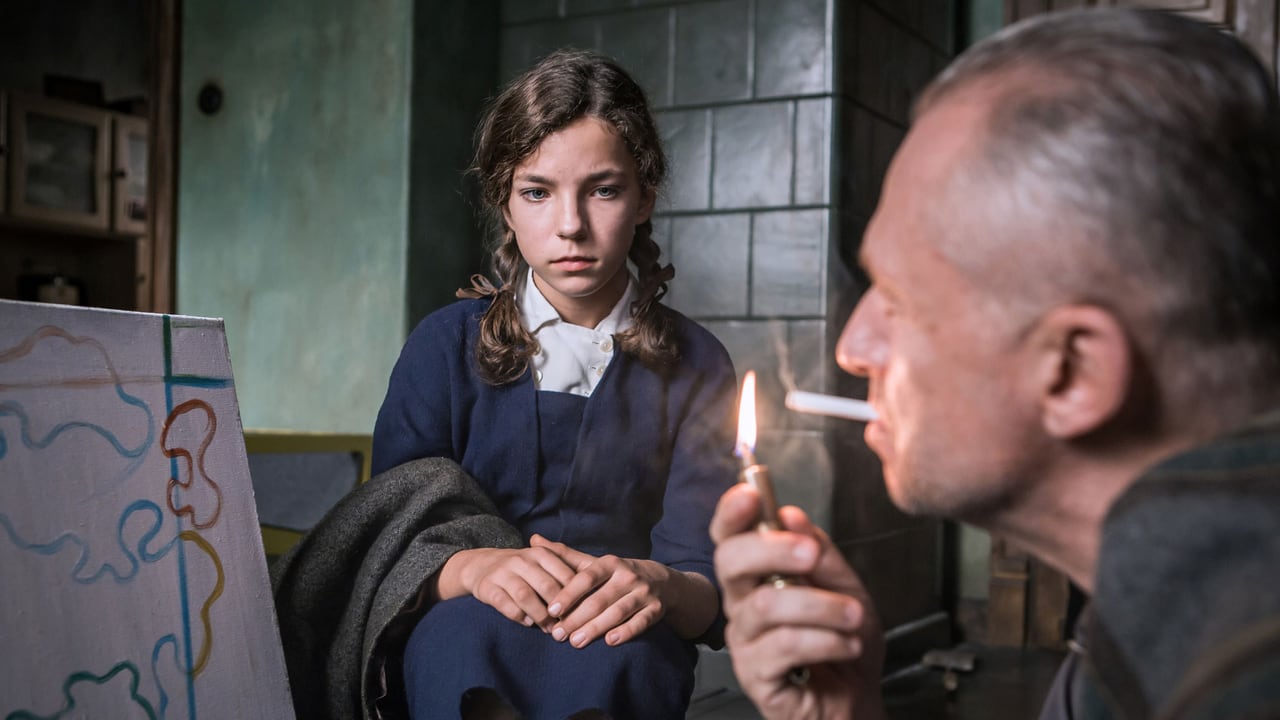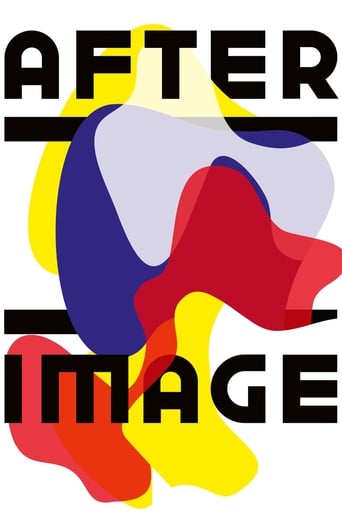



I like the storyline of this show,it attract me so much
View MoreThe film makes a home in your brain and the only cure is to see it again.
View MoreStory: It's very simple but honestly that is fine.
By the time the dramatic fireworks start popping off, each one feels earned.
View More"Illusions "are the latest film by famous Polish director . An extraordinary film achievement that has rounded its imposing opus. The film deals with a topic that is current at all times, that is, how to remain consistent and how to confront the region of a totalitarian and captured state. We all know this well, because from this form we did not move even for inch. If you have not approved it, if you are not applauding, if you are not similar, if you have your own opinion, the state will endeavor to show you its power to bring you under the livelihood line, as director magnificently presented in this biographical film about Polish painter . Extremely strong frames that plasticize all the misery of human life. Film for each recommendation.
View MoreThe Polish film Powidoki was released in the United States with the translated title Afterimage (2016). It was directed by the late Andrzej Wajda. (Wadja lived long enough to see the film completed, but he died before it was released.) I think that it's more than a coincidence that Wajda chose as his final film the story of a great artist who died without ever losing his dedication to art. The avant-garde Polish artist Wladyslaw Strzeminski was highly regarded in art circles all over the world. However, when Poland was dominated by the Soviet Union, he was forced out of his teaching post. Ultimately, he could not find work, and his lack of funds caused him to die in poverty from tuberculosis in 1952.This is a hard film to watch. We see Strzeminski forced from his role as professor, forced to separate from his students, and forced out of the artist's guild. He's told that in Communist Poland, only those who work get to eat. The problem is that the government won't let him work, so basically he is sentenced to death, although he was never charged with a crime.Boguslaw Linda portrays Strzeminski, and his acting is superb. He's an experienced Polish actor, who has worked with Wadja before. A movie like this will stand or fall on the merits of the star. Linda makes us believe in the character. We see him continually making choices. He himself sees no choices--he lives for his art and he dies for it.We watched this movie in Rochester's wonderful Dryden Theatre at the George Eastman Museum. It will work well on the small screen. Afterimage was shown at the Grand Opening of part two the outstanding 2017 Rochester Polish Film Festival. Earlier this year, the Dryden screened A Generation. That was Wajda's first film, and this was his last. What an opportunity to follow the development of a talented director from the beginning to the end of his career.
View MoreIt's very difficult to say Farewell. It's very difficult to make a Farewell movie. I do not know if Andrzej Wajda knew that 'Afterimage' was to be his last movie. He undertook and involved himself in this film with the same passion, rigor and attention to the detail, with the same mastering of the art and science of film-making as ever. He also did not abandon the major theme of his cinema - the history of Poland seen as a subset of the history of Europe and of all mankind, and as a collection of the stories of the men who made it.There is one major difference though. Many of his previous films focused on political characters, they were about men who changed history, about victors at least at the historical scale - Danton, Walesa - even if they sometime paid with their lives. The hero of this film, the avant-garde Polish artist Wladyslaw Strzeminski was defeated by history, and the film is the story of his defeat, of his physical but also moral decay. It's a story quite typical about the manner Communist dictatorships in Eastern Europe treated their artists, and even if I did not know anything about him before this movie, his story was well known to me as the same fate (or worse in some cases) was imposed on artists who did not compromise in Romania where I was born and I lived half of my life. We see him at the beginning admired and valued as a teacher and artist, he also was a companion of modernist artists who were associated with the Russian revolution, but this did not help him either. He was not an anti-Communist, but he valued true art, could not accept enrollment of art as a tool for propaganda and the norms of the dogmatic 'realism', and his refusal to compromise cost him his teaching position, his membership in the artist's union, the very possibility of painting. The humiliating tentative to find a way to survive had no chance, the regime was still in the Stalinist period and crushed all opponents according to the principle 'the one who is not with us is against us'. Even the help and support of a handful of students who stood by their beloved teacher and mentor could not save him.The lead role is played with a lot of restraint and dignity by Boguslaw Linda, his flame is interior, he shows the artist far from being a flawless person, actually sharing some of the guilt of not being able to maintain his family and especially help his teen daughter (exceptional acting of 14 years old Bronislawa Zamachowska). There are many very well constructed scenes, some of them full with details bringing back to life with controlled anger that dark period of transformation, when Poland and Eastern Europe were postponing hope for a few decades and were transitioning from one nightmare to another. Wajda's last film is not a testament, it's an integral part of his opus of work.
View MoreAmazing feat: at the age of 90 Andrzej Wajda is as convincing as he was at the age of 50! Exceptional cinematography: Marek Edelman as excellent as ever. Outstanding acting: Bogoslaw Linda a good bet for best acting. A very good script: keeping balance between the inevitably highbrow dialogues on art and unexpected turns of action. And example for this can be the end of a potential "love affair", which does not end on a romantic note but strikes hard with the brutal abducting of a beautiful girl. Who, by the way, is not the central romantic character. On the contrary, the "great love" remains invisible and is only made romantically visible by white flowers that turn blue. What could more lyrically stress the importance of color in life? By the way, that end of the "love story" is not a harsh rejection, as it may seem, but rather proves that the artist was really fond of the young girl and, nobly, would not allow her to wretch her life at his side.The film is about the cruelty of the Stalinist period and how it intervened and interfered in the private lives of the common citizen and all the more so in the sphere of art, which "had to serve the people and the final victory of socialism". There are no throats being cut, people being shot or hanged. No spanking. Everything takes place in and "orderly way", for strict rules must be followed. Or perhaps only almost always! This reminds us of Kieslowski's film about killing or the thick atmosphere of Arthur Koestler's "Darkness at noon". Little by little art, i.e. the protagonist, is being suffocated. It is like cutting his veins, but not at once, slowly, in slow motion. Let him bleed to death, but "naturally". That was really a very hard time and Andrzej Wajda knows what he is talking about, for he experienced it "on his own skin", as you say in Polish. A symbolic image summarizes the pic: the window in the artist's dwelling is suddenly veiled by a red banner. A painter can somehow bear poverty, but can he survive without light? Brushes, paint? Wajda's choice of the actor (Boguslaw Linda) to embody Wladyslaw Strzeminski, one of the great Polish artists and art professors of that period, was fundamental to the artistic value of the picture. Bearing also in mind the fact that he had to play a cripple, who had lost two limbs, certainly made his acting even more daunting. And the outcome is certainly impressive.Another factor that helps sooth the dreariness of the artist's predicaments is the strong presence of the teenager actress (Bronislawa Zamachowska) who plays his daughter. Her seemingly matter of fact reactions to reality and only rare expressions of deeper feelings function as a balance between the drama we witness and the everyday chores or the mere sipping of tea. "There are holes in my shoes" or "You smoke too much". His adoring students, on the other hand, may represent what was left of hope in those days. Their solidarity with the aging, crippled professor was an omen of better times to come, for who can defeat youth? And who can defeat art? The material shabbiness of those times, when "all were equal, but some were more equal than others", with food rationing, very poor dwellings etc. is shown in detail. Some viewers used to cinematic tangibility may not appreciate some of Wajda's discreet, very subtle hints and symbolic images, but, no doubt, in artistic terms this pic is a comeback to his heydays.Rio Film Festival 8th October, 2016 Tomasz Lychowski
View More